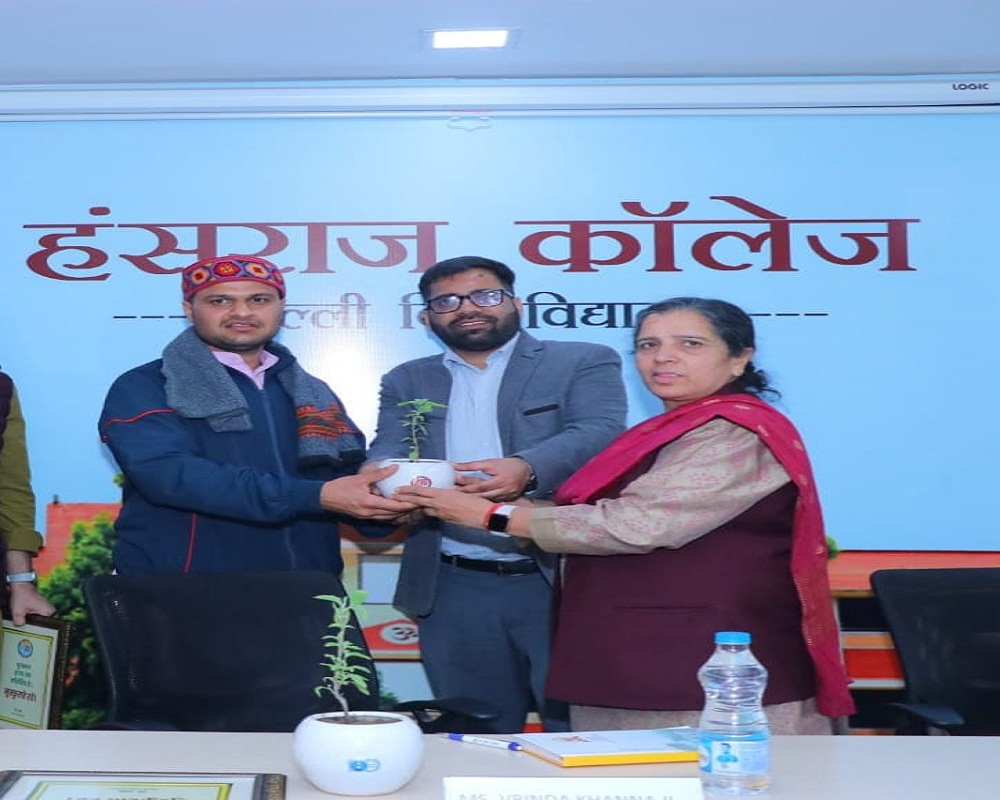Hansraj College of Delhi University organized a distinguished lecture titled “Influence of Swami Vivekananda on Indian Freedom Movement” on February 16, 2023. The speaker for the programme was Nikhil Yadav, Prant Yuva Pramukh, Vivekananda Kendra,Uttar Prant. Vrinda Khanna, secretary of the Eshwer Foundation, was the guest of honour of the programme presided by Prof. Rama, respected principal of Hnasraj College.
Nikhil Yadav, Prant Yuva Pramukh, Vivekananda Kendra, Uttar Prant said, “Swami Vivekananda (born Narendranath Dutta) was born in Kolkata on January 12, 1863, and was endowed with intense patriotism, spiritual commitment, and a genuine personality. Swamiji had a spiritual awakening in his youth after meeting his guru, Sri Ramakrishna. His guru also asked him to help people ("Shiva Bhave Jiva Seva – Service to God-incarnate as humanity.") Swamiji traveled throughout the country, getting to know the people and the land firsthand. He arrived in Kanyakumari after about five years of wandering as a monk, where he meditated on a rock for three days and nights (25, 26, 27 December 1892) on the country's past, present, and future. He discovered that the countrymen had lost their self-esteem, confidence, faith, and belief.
In 1893, he left for America to attend the World Parliament of Religions; despite several obstacles, he made it to the podium, where his opening speech on September 11, 1893, established him as a popular figure. An audience of thousands applauded for two minutes for Swami Vivekananda.
Swamiji spent approximately three and a half years after the Parliament preaching the ancient philosophy of Vedanta and Yoga in various parts of the United States, England, and other western countries.
In January 1897, he returned to India. He delivered lectures in various parts of India in response to the warm welcome and thronging audiences that greeted him everywhere, causing quite a firestorm throughout the country. On May 1, 1897, he also established the Ramakrishna Mission with the motto "Atmano Mokshartham Jagad Hitaya Cha," which translates as "For one's own salvation and the welfare of the world."
Yadav added, "Swami Vivekananda was the driving force behind the Indian Independence movement. He inspired many freedom fighters in the nineteenth and twentieth centuries, including Bal Gangadhar Tilak, Sri Aurobindo, Mahatma Gandhi, Netaji Subhash Chandra Bose, Hemchandra Ghosh, and Sister Nivedita. His speeches and writings inspired Indian youth to join the freedom movement. On the other hand, history and historians have portrayed him solely as a religious or spiritual leader.” The lecture was attended by many students and faculty members of Delhi University.

























